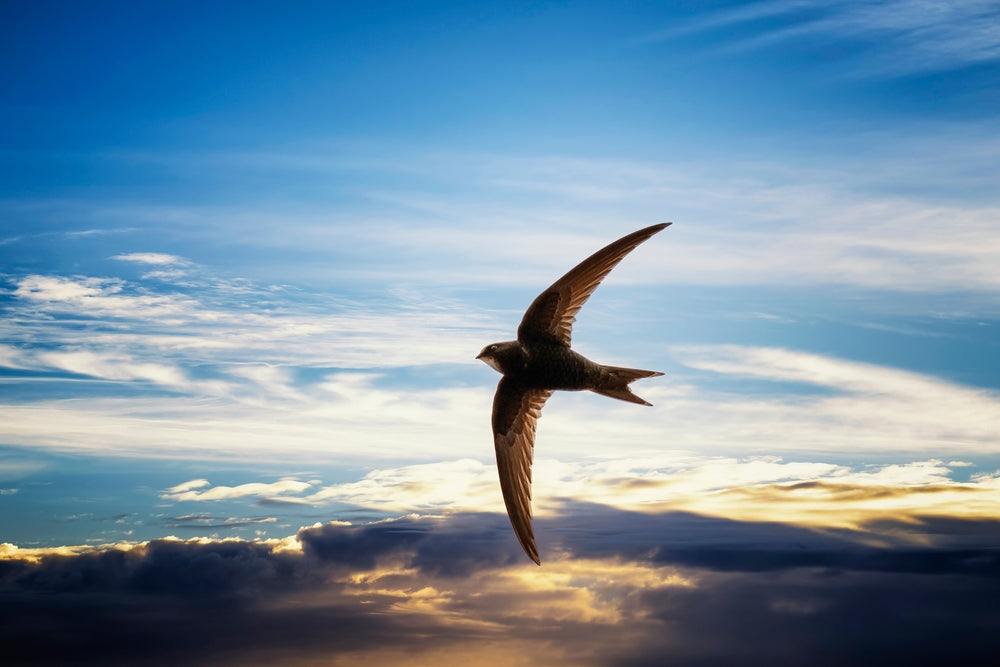Wildlife in the garden - swifts

Swifts (Apus apus) a Red-Listed species of ‘most concern and requiring urgent action’ are iconic summer visitors to the UK, arriving in May and departing by August. Their incredible migration route is the longest of any UK bird species taking them four weeks to travel the 9,000 miles from southern Africa to the UK, travelling at speeds of up to 70 mph.
These remarkable birds spend most of their lives on the wing, eating, drinking, and even sleeping while airborne. With their distinctive sickle-shaped wings and screaming calls, swifts are a disappearing sight from our skies. Populations have declined dramatically in recent years, with numbers dropping by an estimated 65% since 1994. This decline is primarily due to the loss of nesting sites, as modern building practices and renovations eliminate the small gaps and crevices that swifts use for breeding.
To address this issue, conservationists and architects have developed an innovative solution - swift bricks. These specially designed bricks can be incorporated into new buildings or retrofitted into existing structures, providing safe and suitable nesting spaces for swifts. The bricks are hollow units that blend in with standard brickwork featuring a small entrance hole and an internal nesting chamber, typically installed high up on buildings, usually under the eaves or gable ends, mimicking the natural nesting sites.
Many local authorities in the UK now require the inclusion of swift bricks in new developments as part of their planning conditions. This approach not only helps swift conservation but also adds to biodiversity in urban areas. The RSPB and other conservation groups are encouraging builders, architects, and developers for wider adoption of these bricks. They argue that integrating these features into buildings is a cost-effective and long-term solution to support swift populations.
An intrinsic element of a summer’s evening, who hasn’t taken for granted the screaming mobs of adults and adolescents careering across the evening sky as the barbecue sizzles and we sit sipping cold lager oblivious to the plight of this iconic summer bird?











